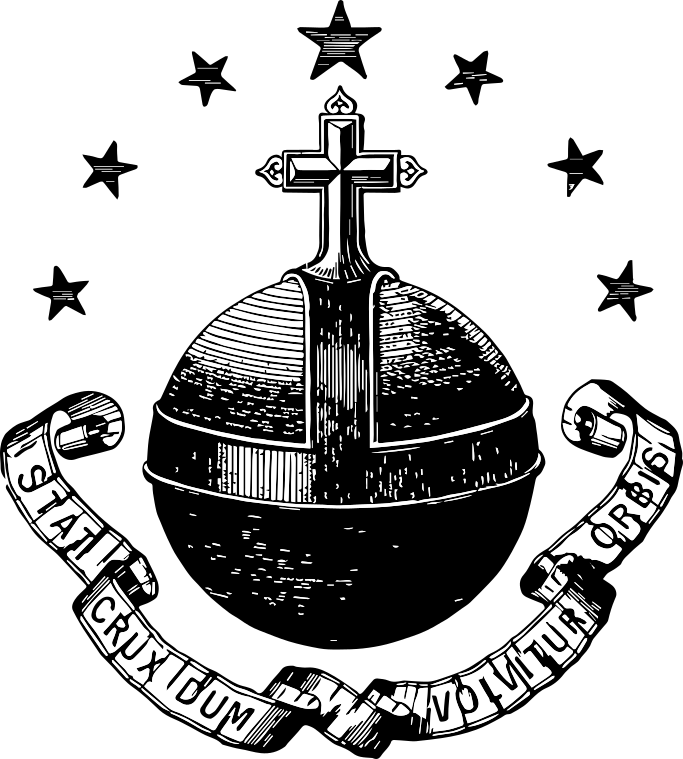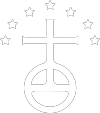From the start, the Carthusians in the Red Monastery began with a temporary construction. A wooden structure was established and gradually rebuilt into a monastery made of bricks and stone. No later than in the first half of the 14th century, the Carthusians built separate houses for priests, with gardens. In 1360, the construction of the most important monastery building, the church, began. The works were carried out in line with the faithfully established rules, since the monks had designed their own type of church building – without a tower and side naves. The consecration of the church and the place itself to Anthony the Great was not accidental. The Carthusians chose him as a patron and a role model of contemplative spirituality. The Church was connected to a small as well as to the large cloister linking residential housing, the priests’ hermitage.
At the turn of the 15th and 16th centuries, the monastery, the convent and the chapter hall were renovated. From the north side, they added a new entrance courtyard to the monastery complex with a large administration building (barns, granaries). There was a hospice and a hospital by the east wall. The monastery mill stood at the southeast corner.
Hermitages were built around the perimeter of the monastery’s inner courtyard. Each house was allotted a separate garden with approximately equal area (around 9 × 9 m).
Hermitages were built around the perimeter of the inner courtyard of the monastery. Each house was connected to a separate garden on an approximately equal area (approximately 9 × 9 m).
In 1351, the monastery became organizationally independent from the mother monastery in Letanovce and gradually became an important religious centre on the Hungarian-Polish border. Through gifts and purchases, it acquired large plots of land and was granted important privileges, including the right to fish on the Dunajec river, the right to build a mill, the right to brew beer and the right to exercise local jurisdiction. In addition, in 1472, the monastery in Lechnice acquired property from Ján Felkes and Ladislav Szatmak in the form of 10 vineyards in the Tokaj area. The Hungarian King Matthias Corvinus donated 18 florins (medieval gold coins) to the monastery every year. In 1494, Vladislav II, King of Hungary, freed the monastery from fees and tolls for transporting wine to neighbouring Poland. In 1501, King Vladislav II decided that the monks would receive three rings of white cloth, two tons of fish and a ton of oil from the yield of the Košice tax each year. In 1518, the Polish king Sigismund the Old confirmed the privileges granted to the Carthusian monks in Lechnice by his predecessors. At the same time, he allowed them to fish on both banks of the Dunajec river and confirmed the right to cross the river.
The invasion of Hussite troops from Bohemia interrupted the boom which the monastery enjoyed throughout the 15th century when it became a target of the glorious rides led by Ján Pardus from Hrádek and Fridrich from Strážnice. Monastic community suffered some of the most excruciating times during the first Hussite invasion in 1431, when the monastery’s Prior was kidnapped, and the premises were burned down and looted. During the second invasion in 1433, the monastery was looted again. However, the end of Hussite attacks did not bring a period of peace badly needed for the monastery to recover. Fraternal troops not only attacked both Spiš monasteries between the years 1447 – 1448, but also settled here and built field fortresses. Their long-term presence resulted in the decay of the monastery and caused an economic decline of the local communities.
The turbulent conditions in the country, the beginning of the Reformation, the dual government and the struggle for the throne between Ferdinand of Habsburg and Ján Zápoľský all led to outbreaks of religious intolerance. Both Spiš monasteries suffered from the upheaval in the country. They began to lose property and became the target of raids. Gradually, the monks left the monastery and went to quieter Poland, Austria and Moravia. In 1563, the monastery was abolished, and with the death of the last prior, it practically ceased to exist.
After the departure of the Carthusian monks from the Lechnice Monastery, the building lost its character as a spiritual abode. In 1563, the Spiš Prior Juraj Bornemisza took over the management of the property and from 1569, all the property passed into the hands of secular owners. First, it was the Magóczi family, then Štefan Tököli and Juraj Horváth. After his death in 1625, Pavol Rákoczy acquired the property. Count Pavol Rákoczy supported the restoration of the monastery for personal reasons, since he stayed in the monastery with his family longer than its former owners. It was owned by this important aristocratic family until 1699, when Elisabeth Rákoczy sold it for 30,000 to the Bishop of Nitra, Ladislav Maťašovský. In 1704, Maťašovský bequeathed the monastery to the Camaldul Order, who lived in Nitra. At the beginning of the 18th century, a strictly oriented community of monks came to the monastery again.
After their arrival in Zamagurie region, they focused their attention on the reconstruction and contributed to the renovation of the entire monastery complex, which they gradually repaired in accordance with the needs of the order. Some buildings were rebuilt in the Baroque style, some were finished according to their original design, and so in the middle of the 18th century the monastery acquired its final shape which we admire to this day.
In 1747, the repaired and repainted single-nave Gothic church of the Anthony the Great was consecrated with new furniture. According to the tradition of the Carthusians, the church did not have a tower. It was added only in 1750. A sandstone sculpture of the Immaculate Virgin Mary was placed in a niche in the tower, which currently adorns a small cloister. During the times when the monastery was inhabited by Camaldul monks, it gained a rich polychrome stucco decoration and a painting by Italian masters.
Forming part of the monastery, the monk’s houses were rebuilt during this era, too. Of the original 13 hermitages, 10 have been preserved. At present, three have been restored and seven of them remain in their stone torsional state.
In 1754, they restored the entrance of the monastery courtyard and built a second, outer courtyard in the administrative part. Opposite the new western entrance gate in the first courtyard in a hill called “Uhliská”, they built a stone chapel (these days, only ruins have remained) for passers-by. They took good care of the monastic garden bordering the banks of the Dunajec river. The garden later became a park, in which the inhabitants planted linden trees. The Lechnice parish had a sculpture of the Holy Trinity built next to the monastic garden with the inscription 1768, which is still clearly visible today. At present, the original is stored in the Anthony the Great Church and its faithful copy replaced the original in the park.
As for the economic tradition, Camaldul monks followed their predecessors. As early as 1718, they managed to restore the glassworks in Lesnice. The glass workshops belonging to the monastery were located in Richwald (Veľká Lesná) and in Reľov. Outside the walls of the monastery, they also took care of fields full of grain and legumes. The monks were granted the right to fish on the Dunajec river and to collect customs duties. They also operated a mill. The monastery courtyard accommodated a depot, cattle stables and a malt warehouse. This way, the monks managed to cater for their humble needs and also help others in the area.
The Red Monastery goes down in the Slovak cultural history thanks to the Camaldul monks, especially the works of two prominent figures: Father Romuald Hadbavný (who translated the Holy Scriptures – the Camaldul Bible) and the brother Cyprian with his Herbarium.
After his accession to the throne, Emperor Joseph II, son of Maria Theresa, decided to abolish many monasteries as part of his reforms with the Red Monastery being no exception. The imperial decree, which was read in the Red Monastery on April 24, 1782, ordered the monks to leave the monastery by September 24. Thus, the monks left the Red Monastery for other convents and for years to come, it fell into disrepair.
In 1820, Emperor Francis I donated the monastery and its surrounding land and property to the newly established Greek Catholic Diocese based in Prešov as part of assets for its foundation. However, after years of struggles for restoration, once the serfdom was abolished in Hungary in 1848, the monastery began to decline significantly and its destiny was fulfilled in 1907, when the monastery burned down.




